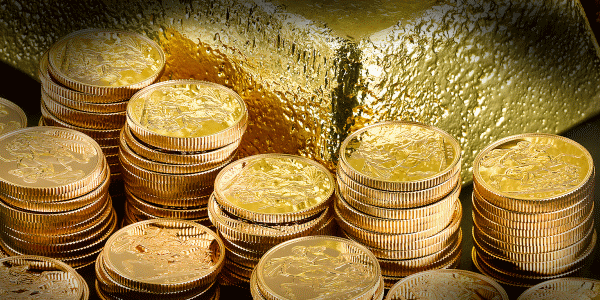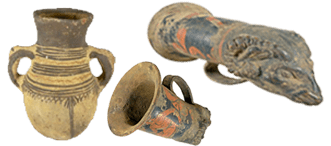Few things are more exciting than adding special pieces to a collection. Whether you collect artifacts, ancient coins, fossils, minerals, crystals or other antiquities from around the world, Ancient Artifacts & Treasures, Inc. has the inventory selection for you.
The article below was written by Jeff Garrett for Coin World Magazine. Jeff is the current past president of the American Numismatic Association (ANA) to which I also belong.
I found the article to be a very good introduction for new collectors to the coin hobby.
Useful facts and helpful tips for new coin collectors
By Jeff Garrett for Numismatic Guaranty Corporation (NGC) ……
One complaint that I sometimes receive about my articles is that there is not enough information for those new to the hobby. Most of my articles in recent years have drilled down on specific subjects, with the benefit of many years in the field.
Advanced collectors appreciate the knowledge and viewpoint, but the information is sometimes too advanced for beginners. The following is from several speeches I have given over the years and might be useful for those who have just discovered the hobby.
Myth 1: Collecting rare coins is for rich people
Numismatics is sometimes referred to as “The Hobby of Kings”. This has been the case for centuries, and the ancient Romans are known to have collected Greek coinage. European kings and royalty have collected coins for nearly 2,000 years. Some of the greatest museum collections are founded on these collections.
Today, however, coin collection is very democratic. You can have fun for a few dollars per week. This is how I started collecting coins: Lincoln cents in pocket change. It is harder today, but State or National Parks quarters can be an interesting challenge.
Or you can spend millions if your budget allows. The buyer of the 1933 Double Eagle paid over $7,000,000 USD, and it is rumored that it is the only rare coin he has. There are very interesting coins for every budget. Coin collecting is a great way to save money, and the long-term accumulation of a rare coin collection is usually an excellent investment.
Myth 2: Old coins are the most valuable
Age has almost nothing to do with the value of a coin. Ancient Roman coins can be purchased for $5-$10. A gem 1956 Franklin half dollar recently sold at auction for over $100,000. Rarity and condition are what makes a coin valuable. The combination of both is when the big bucks come into play.
Popularity is also a factor. An 1895 dollar is worth $75,000, yet several hundred are known. I recently purchased a unique piece of Kentucky National paper money for $4,000, but very few people collect them.
Great stories are also very important. My book, 100 Greatest U.S. Coins, tells the stories of what makes a coin great, and in most cases, it’s the stories attached to them. The 1933 Double Eagle mentioned above has an amazing story, and it’s a story that continues to evolve to this day.
Myth 3: If I clean my coins, they will be more valuable
Cleaning your rare coins will destroy their value in most cases. Very skilled experts can conserve coins, but the general public should never, ever clean a coin.
Rare coin collectors are very conflicted about this subject. Most will tell you they want original and uncleaned coins. In reality, they usually purchase the frosty white examples with great eye appeal. These coins are usually the result of expert conservation. NCS does an excellent job filling this need for collectors and dealers.
Myth 4: Mint errors are very rare and valuable
Although some are expensive, such as the 1943 bronze cent, most are common and not very valuable. Off-center cents can be purchased for a few dollars.
Mint errors are one of the most common calls to my office. The public is very disappointed and finds it hard to believe that a mint error has so little value. The Guide Book of United States Coins (Redbook) has a wonderful chapter on this subject.
Myth 5: Rare coins always go up in value
I wish this were true, but it is not. Most long-term collectors do great, but investing can be tricky. The rare coin market is usually cyclical, and building a collection over the long term is the safest bet.
As I have mentioned many times, find someone with years of experience and knowledge that you can put to work when building your collection. A trusted adviser can help you take advantage of down markets.
Myth 6: The best deals to be found are online
To be sure, there are some great deals to be found when surfing the internet. Unfortunately, there are also fakes and over-graded, over-priced coins to be found as well.
Just remember, if it’s too good to be true, it usually is too good to be true! It is essential to be careful whom you buy from on the internet. If there is not a solid return privilege, shop elsewhere.

Myth 7: Rare coin prices are closely tied to bullion prices
The bullion price of gold can have an impact, but rare coins have gone up plenty in previous years when bullion levels where flat. Supply and demand play a much bigger role in the price of rare coins.
Many collectors and dealers have been waiting years for bullion to lift the market. More collectors entering the market would be much more effective.
Myth 8: Coin collecting is a great way to meet girls!
Coin collecting might not be the best place to meet girls, but it is a wonderful place to make new friends. Numismatic camaraderie is an important part of the hobby. Many of my best friends are ones that I met through rare coins. These relationships span decades and have been very fulfilling, to say the least.
Numismatic friends are also an important part of being a successful collector. Many individuals have been collecting for years and are eager to share their knowledge.
As mentioned in the first paragraph, the above information is great for beginners and has part of many speeches about rare coins I have given.
I encourage anyone who reads this to consider using this article for your own speech to a group that might be interested. Remember, growing the hobby is the best way to ensure the future of numismatics.
Read More




 The warm color of Citrine is said to be a gift from the sun and has taken on the more gentle qualities of men; peace, prosperity, loyalty, healing and creativity. The stone is also known as the ‘Healing Quartz’ in many sects. It is used in making all kinds of jewelry.
The warm color of Citrine is said to be a gift from the sun and has taken on the more gentle qualities of men; peace, prosperity, loyalty, healing and creativity. The stone is also known as the ‘Healing Quartz’ in many sects. It is used in making all kinds of jewelry.

